HS101 Oscilloscope
HS101 is a portable and compact DIY oscilloscope for mobile phones and tablets using Android with HScope app. Easy to build, this oscilloscope is made for standard uses like DC measurements, long period voltage logging and automotive basic checkup like:
- Battery level logging
- Battery Ignition Off Draw (IOD) data logging (with C650-like amp clamp or a DIY tool)
- Alternator AC ripple level (example here)
- Relative Compression Test (with C650-like amp clamp, example here)
- In-Cylinder Compression Test (with 100 PSIG pressure sensor, example here)
- Fuel Pump Test (with C650-like amp clamp, example here)
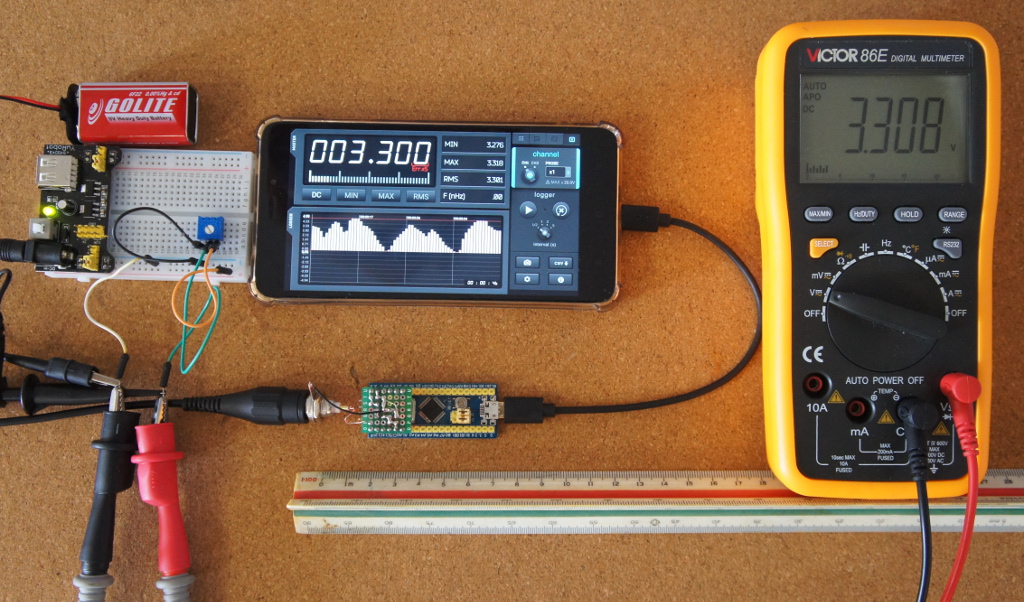
Specifications
-
Channels
1
-
Input Range
0 - 20V or see Other Modules
-
ADC Resolution
12 Bits (effective without noise: 8 bit, 10bit @ 100KSa/s, 11bit @ 75KSa/s, 12bit @ 12KSa/s)
-
Sampling rates
3KS/s, 6KS/s, 12KS/s, 25KS/s, 50KS/s, 75KS/s, 100KS/s, 150KS/s, 300K/s, 450KS/s, 600KS/s, 900KS/s, 1800KS/s (experimental, not linear)
-
Bandwidth
(sine wave -3dB)200KHz (not limited without capacitor C1). Sine wave visible with sinc interpolation up to 400KHz @ 1800KS/s)
-
Continous acquisition
Up to 100KSa/s
-
Input Noise
< 60mV (<= 15mV for Sampling Rate <= 100KSa/s)
<=20mV with the Black Pill (<=10mV for Sampling Rate <= 100KSa/s) -
Input Impedence
10KΩ (if use a standard oscilloscope probe it works just with x1 factor) or see Other Modules
-
Consumption
< 0.1A
-
Modules supported in HScope
Automotive Module, Audio Module
1. HS101 Oscilloscope Build Instructions
The hardware is based on STM32F103 microcontroller. It integrates 2 fast 12bit ADCs for the data acquisition. The Blue Pill development board has been chosen for its size, suiteable for this project.
Over this board we are going to install a little module for input acquisition.
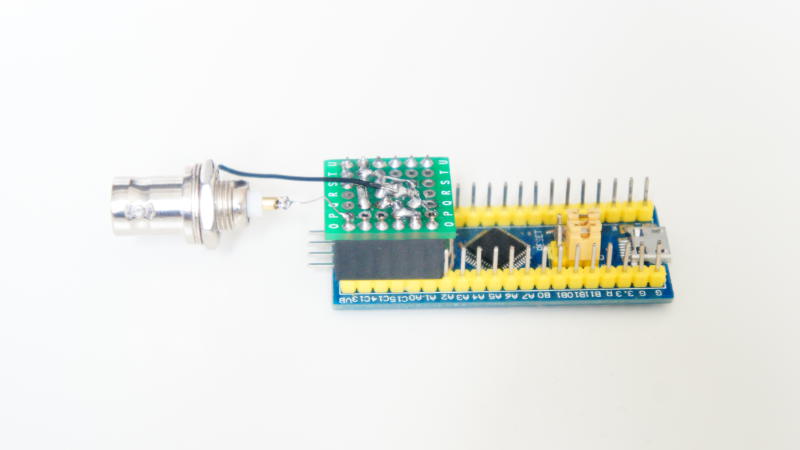
The input module is the only part that needs to be built with a stripboard. Here is the building scheme for this module. Schematic files are available on GitHub. Components are on the top, connections are made on the back.
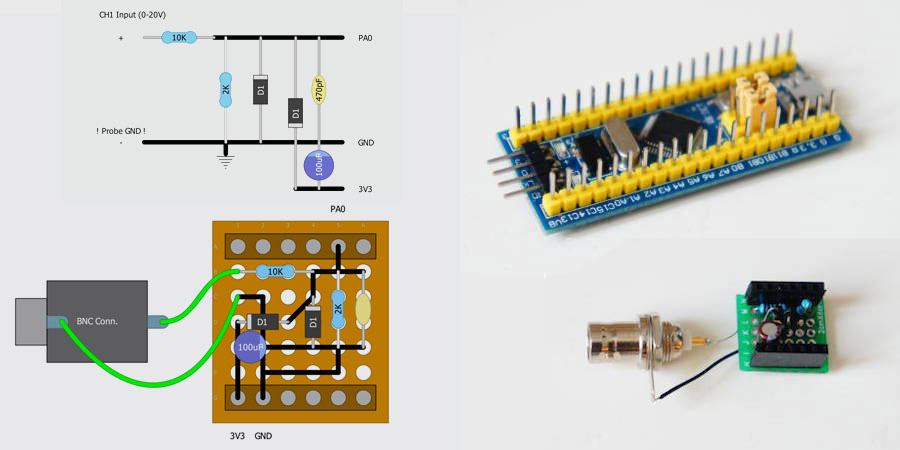
List of the components:
| Name | Value | |
|---|---|---|
| Microcontroller | STM32F103C8 Blue Pill | 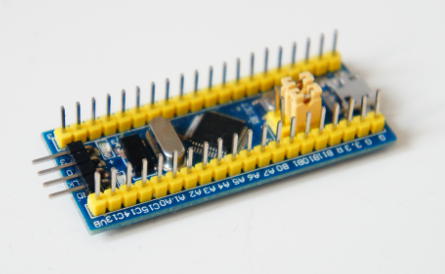 |
| Microcontroller Programming Tool | Raspberry Pi USB to TTL Cable (or another model specified here) | 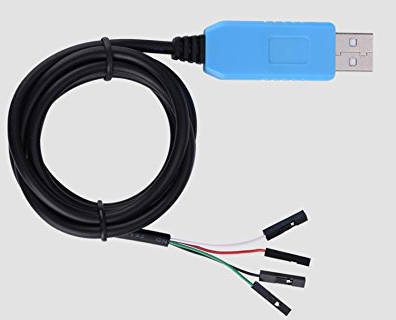 |
| Perforated PCB Board | 6x7 holes | 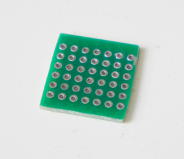 |
| Connectors | 6 Pin single row female 2.54mm pin header connector strip (x2) 6 Pin single row male 2.54mm pin header connector strip (x2) |
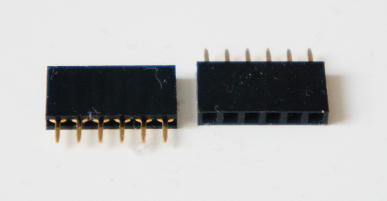 |
| R1 | 10KΩ - 1/4W | |
| R2 | 2KΩ - 1/4W | |
| C1 | 470pF | Allow a better ADC response but reduce the Bandwidth (optional) |
| D1 | 1N4007 (x2) | |
| USB Cable | USB OTG Cable - Micro USB to Micro USB or USB Type-C to Micro USB (according the device) | 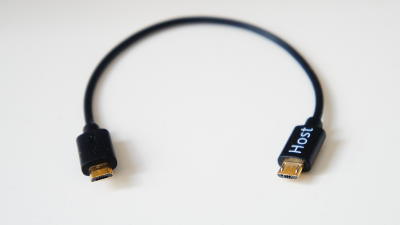 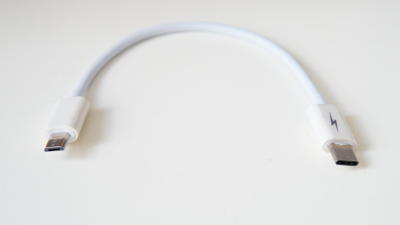
|
| Other | Probe with BNC Connector or cable for making the probe. Plastic box or 40mm Heat-shrink tubing for boxing. |
Probe:
When using a BNC connector it is possible to use commercial oscilloscope probes. As an alternative it is possible to use a self made cable with or without connector (I suggest a shielded cable like a headphone cable).
2. Flash the Firmware
The firmware flashing is made with the app STM32 Utils which allow the direct flashing of the HS101 firwmare. In this app there are the instructions on how to connect the USB-TTL Cable to the STM32 Blue Pill board.
After the connecting, and pressing Init Chipset:
1) Go to Init Chipset and check that the app read the chipset
2) Go to the Blue Box icon and in the list select HS10X Oscilloscope, then FLASH FW
After flashing disconnect the USB-TTL cable from the STM32 board and reset the jumpers to the original position.
In case you have your own programmer then you can get the firmware from GitHub
3. Tests & Calibration
This guide is available here.
4. Alternative Design
This is an alternative design using a 3.5mm audio connector for the probe.
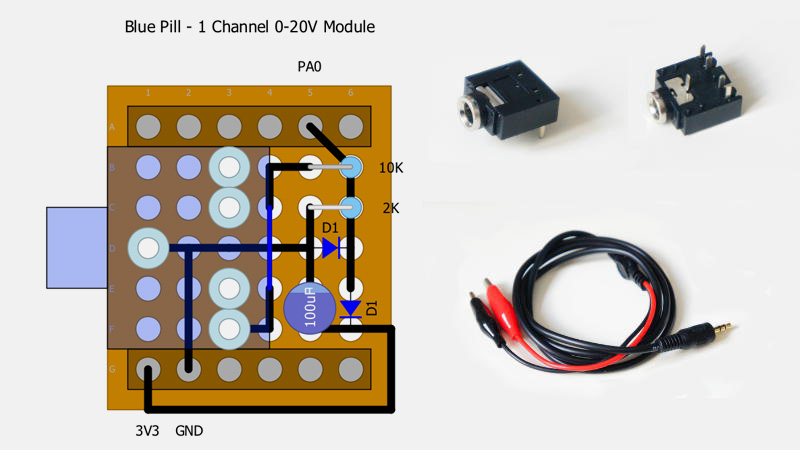
In case you wish to make the board as thin as possible for a little box (in the picture 58x35x15) the components should be placed flat.
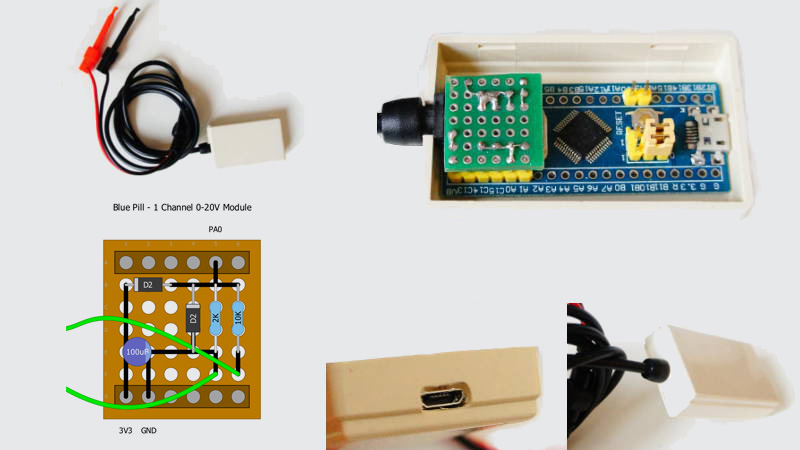
5. Modifications to the basic schema
It is possible to design the analog input module to work with input voltage ±5V or ±15V, or it is possible to add harware AC/DC coupling. You can check it here.
6. Other
First Release: Jul 2018
Last Update: Jun 2019